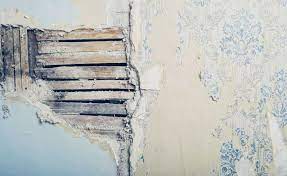The power of art in healing and therapy has long been recognised as a transformative tool for mental, emotional, and spiritual rehabilitation. In therapeutic settings, such as clinics, wellness centres, and private therapy rooms, art is not merely decorative; it serves as a crucial element in the healing process. This blog explores how different types of spiritual icons, including Buddha figures, are integrated into therapeutic environments to aid in healing and foster a sense of peace.
The role of art in therapy
Art in therapeutic settings does more than fill empty wall space—it can significantly alter the atmosphere of a room, influencing the mood and feelings of those within it. Visual stimuli can evoke emotions and thoughts, stimulate memories, and encourage contemplative introspection or a calm mind. In settings where individuals are seeking peace and recovery, art becomes a silent therapist; its colours, forms, and subjects engage the subconscious, helping to soothe and heal.
Types of art used in therapeutic settings
Therapeutic spaces often use a variety of art forms to create an environment conducive to healing. Nature scenes can promote calmness and are frequently used to bring the tranquillity of the outside world into clinical environments. Abstract pieces may be used to evoke introspection and self-exploration, allowing individuals to project their emotions and interpretations onto the art. Meanwhile, figurative art, including depictions of serene faces and gentle landscapes, can provide comfort and a sense of familiarity.
Spiritual icons as therapeutic tools
Spiritual icons are particularly powerful in therapeutic settings because they carry rich symbolic meanings and often serve as focal points for meditation and reflection. Icons such as crosses, mandalas, and Buddha figures are not only aesthetically pleasing but also embody deeper spiritual or cultural significance that can aid in the healing process. These symbols can serve as reminders of serenity and spiritual balance, offering support and comfort to those in recovery or undergoing therapy.
Creating an effective therapeutic environment
The effectiveness of art in therapy depends on its thoughtful integration into the space. It is crucial that the art selected evokes positive feelings and supports the specific therapeutic goals of the setting. The arrangement of artwork, the lighting used to illuminate it, and even the colour palette of the room are all significant factors that contribute to the overall healing effect. Art should be accessible and relatable to those who interact with it, making the space feel safe, welcoming, and conducive to recovery.
Enhancing therapy with Buddhist principles
Incorporating Buddhist principles into therapeutic art can enhance the healing atmosphere of a space. Buddhism emphasises mindfulness, the release of suffering, and the path to enlightenment—themes that are beneficial in therapeutic practices. Art that features Buddha figures can be particularly effective. These figures often embody peace and mindfulness, serving as a gentle reminder to those in therapy to focus on the present moment and foster mental calmness. By including such symbols, therapists can subtly reinforce the therapeutic messages of peace, mindfulness, and emotional resilience.
The thoughtful integration of art, especially spiritual icons like Buddha figures, into therapeutic spaces can significantly enhance the healing process. By carefully selecting artwork that supports and reflects the therapeutic aims, practitioners can create environments that not only heal but also inspire and soothe the soul.





